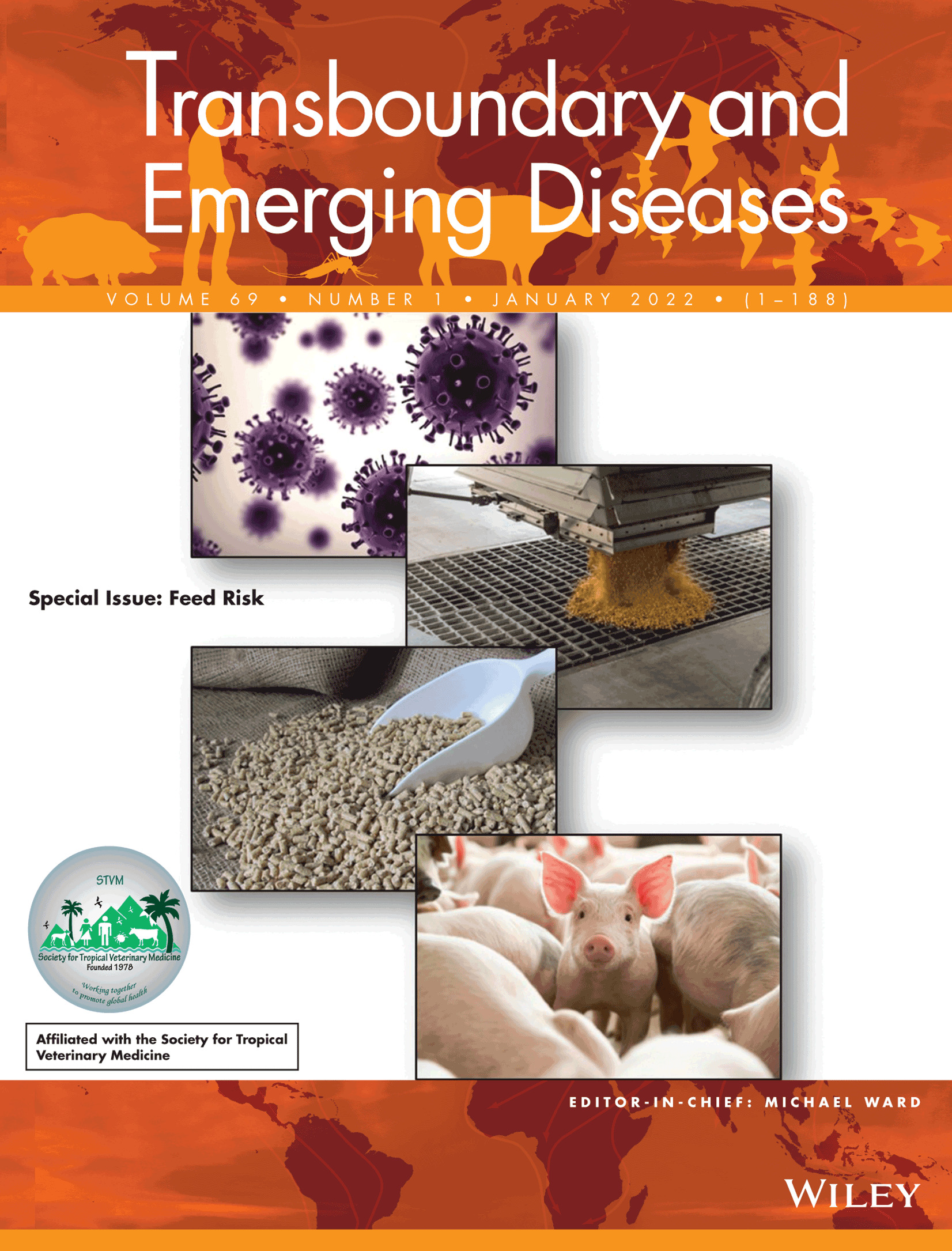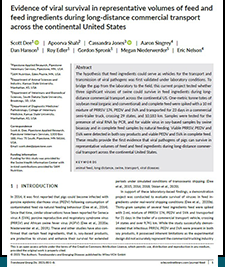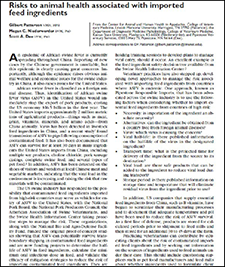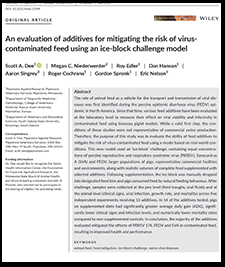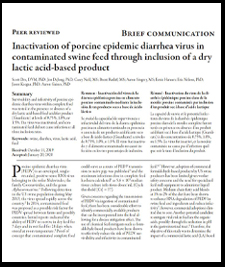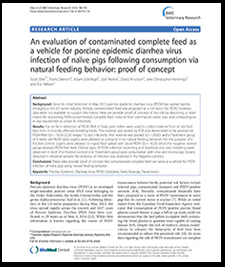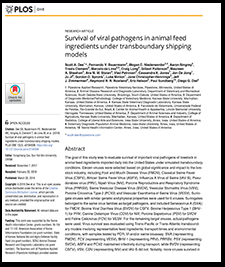Feed: A new pathway for the domestic and transboundary spread of viral pathogens of veterinary significance
Protecting, improving and monitoring the health of herds and flocks is the goal of the veterinary profession. Over time, veterinary science has identified multiple routes of pathogen entry into animal populations, including infected breeding stock and semen, contaminated transport, fomites and aerosols. In response, science-based biosecurity protocols have been designed to reduce or eliminate these risks. In contrast, the ability of feed and feed ingredients to serve as vehicles for the transport and transmission of viral pathogens is a new discovery, previously thought not to occur, and therefore ignored at the level of the classroom, the farm, government administration, global animal health organizations and elected officials.
Evidence of viral survival in representative volumes of feed and feed ingredients during long-distance commercial transport across the continental United States
The hypothesis that feed ingredients could serve as vehicles for the transport and transmission of viral pathogens was first validated under laboratory conditions.
Risks to animal health associated with imported feed ingredients
The possibility that contaminated feed may be a source of infection across all animal industries is important and calls for the development of control and monitoring protocols based on available scientific data for pathogens of interest. Such scrutiny is critical to the preservation of our livestock, companion animals, and client well-being.
An evaluation of additives for mitigating the risk of virus contaminated feed using an ice-block challenge model
The role of animal feed as a vehicle for the transport and transmission of viral disease has been well established. This study looks at the possibility of additives mitigating viral viability in contaminated feed.
Inactivation of porcine epidemic diarrhea virus in contaminated swine feed by inclusion of dry lactic acid-based product
Survivability and infectivity of porcine epidemic diarrhea virus within complete feed was tested. The variable being was the presence or absence of a dry lactic acid-based feed acidifier.

